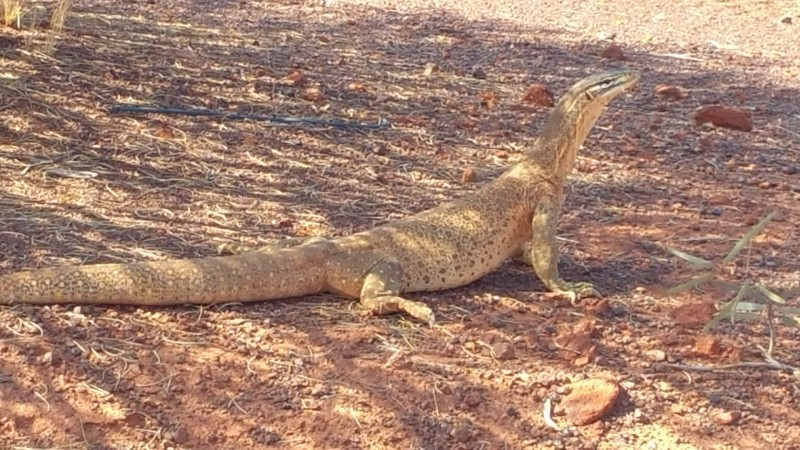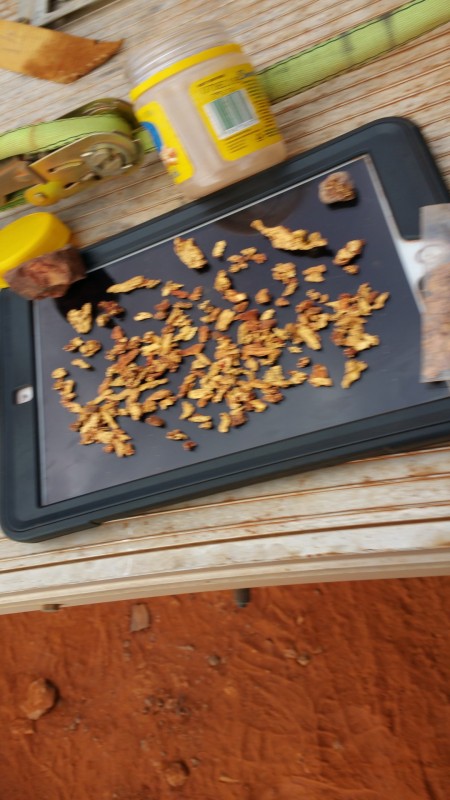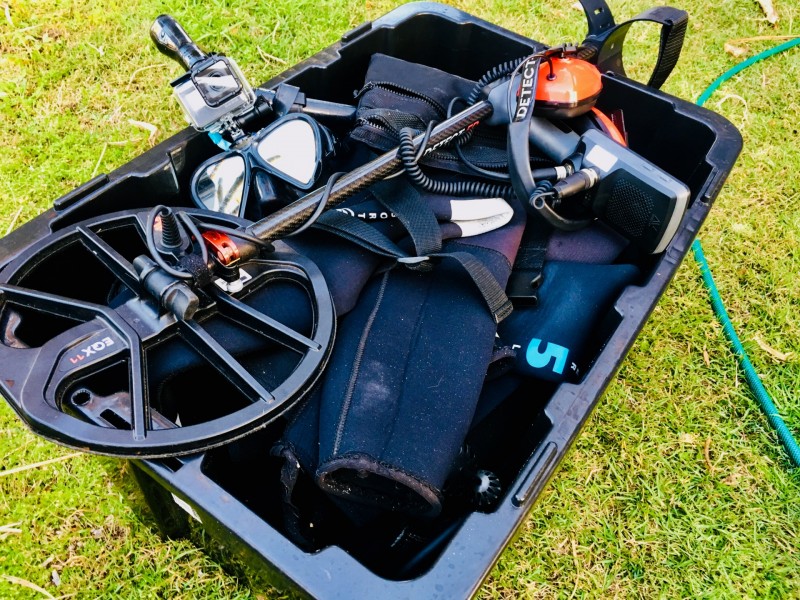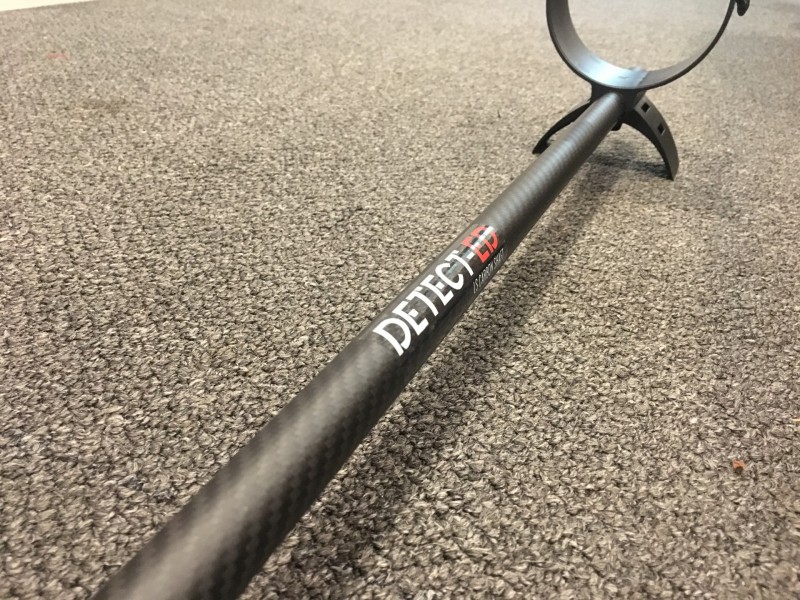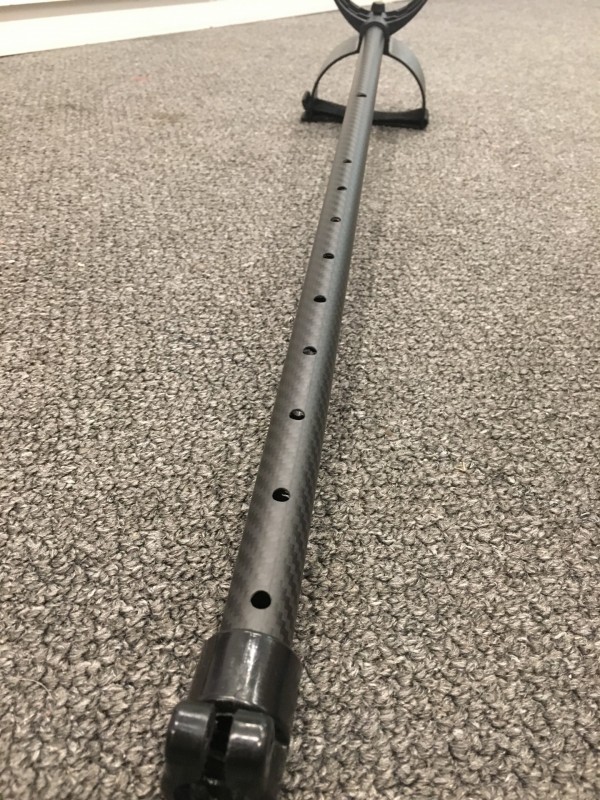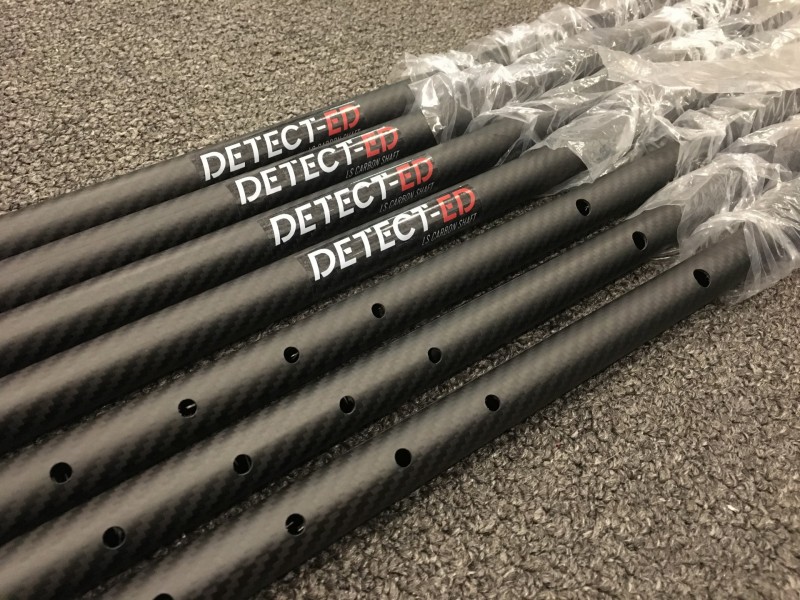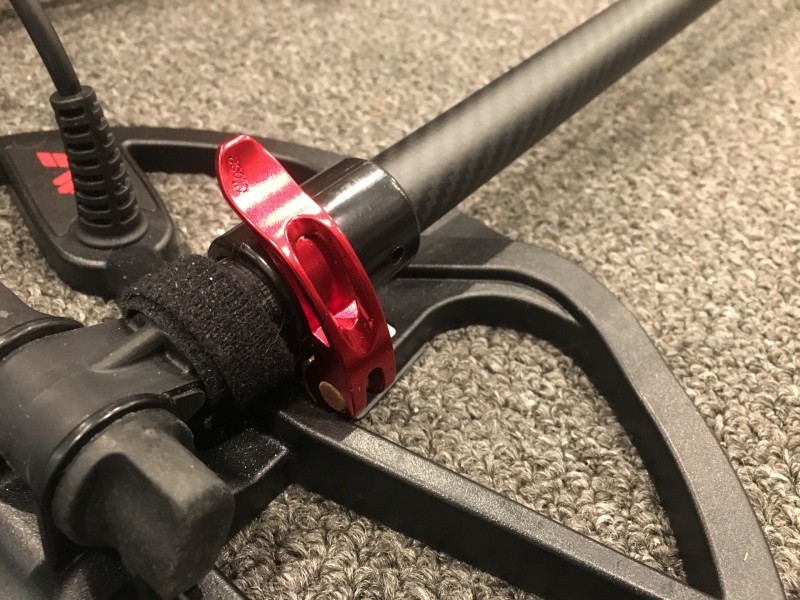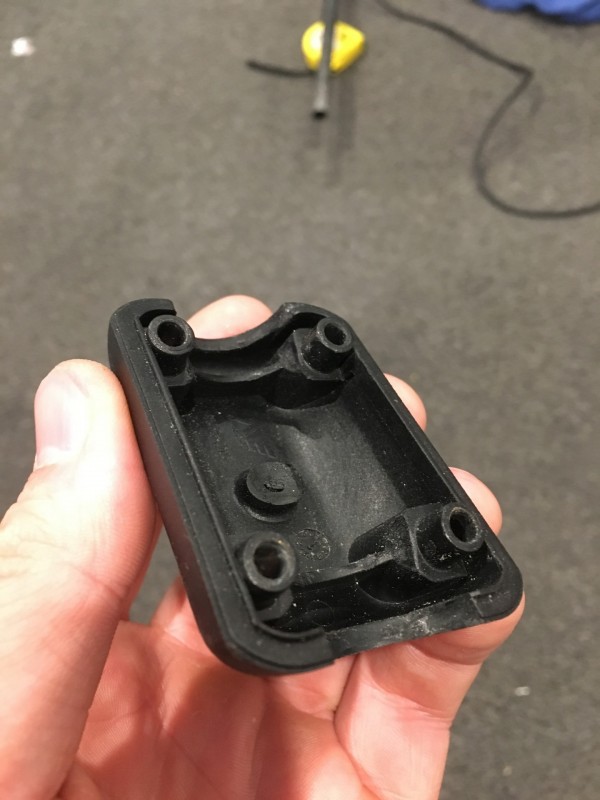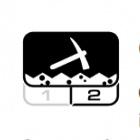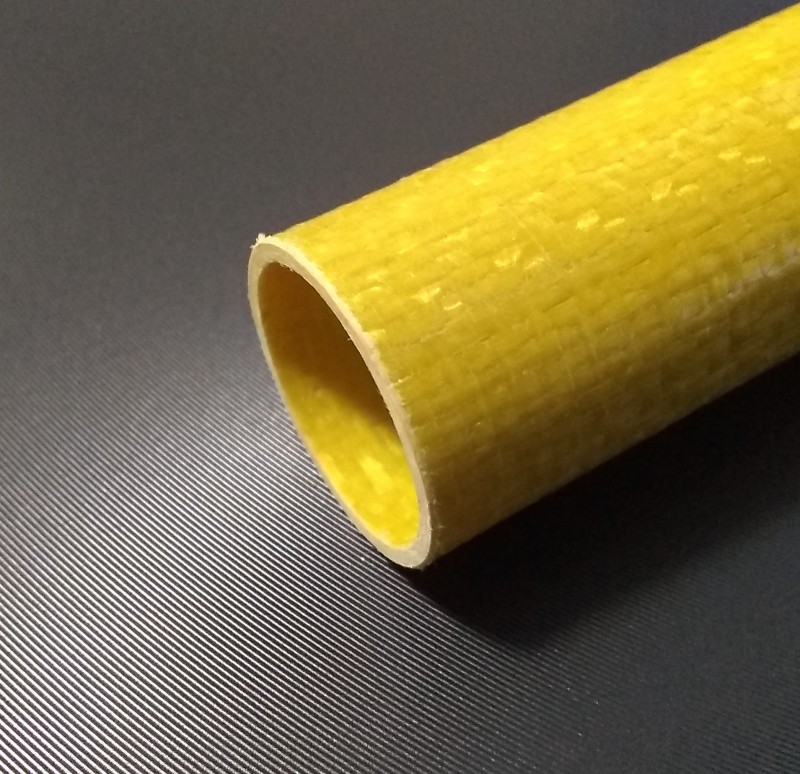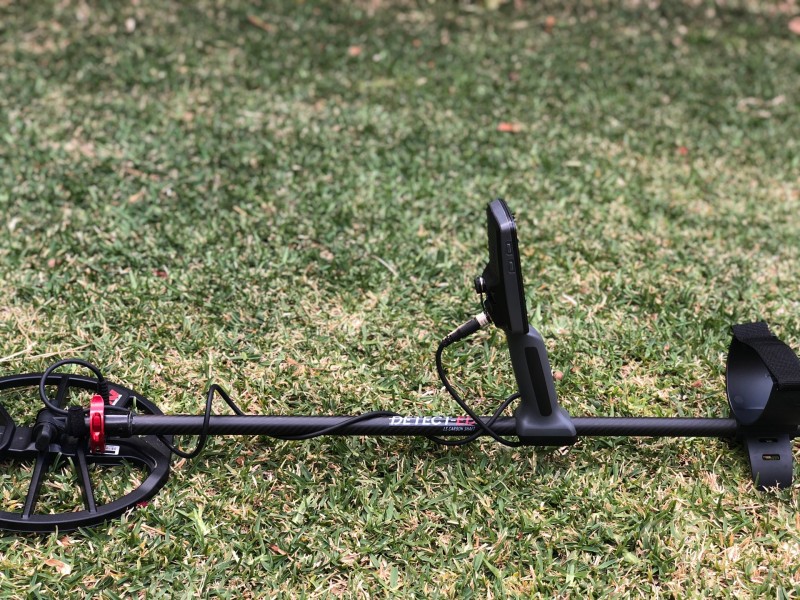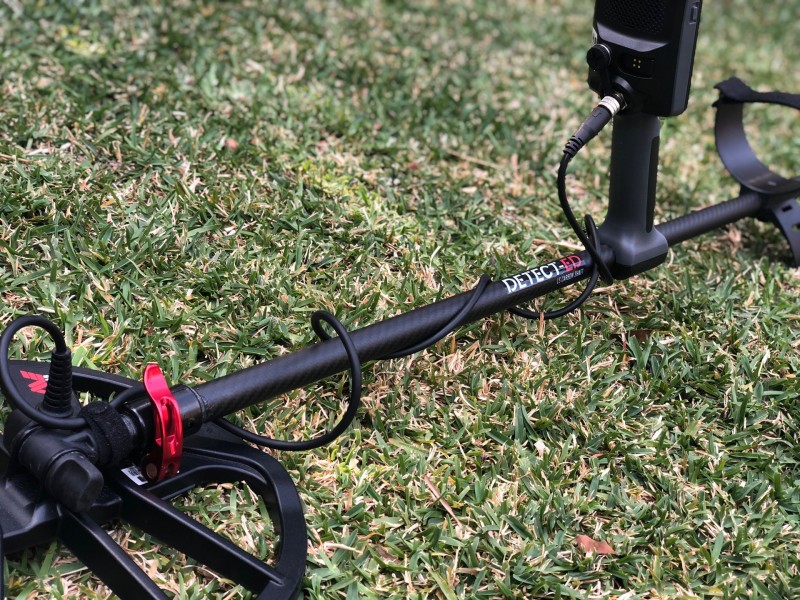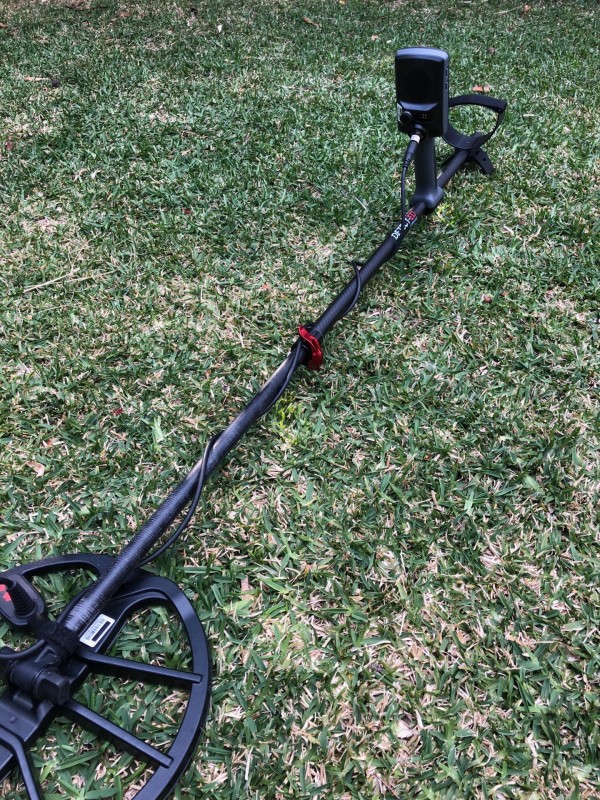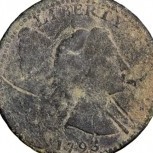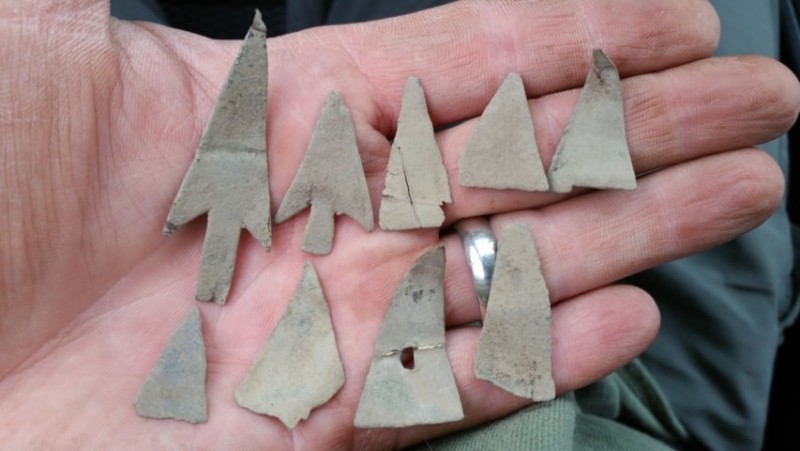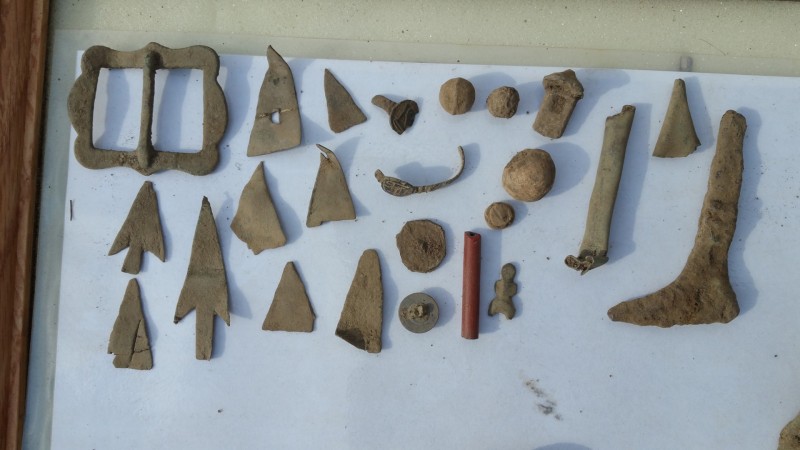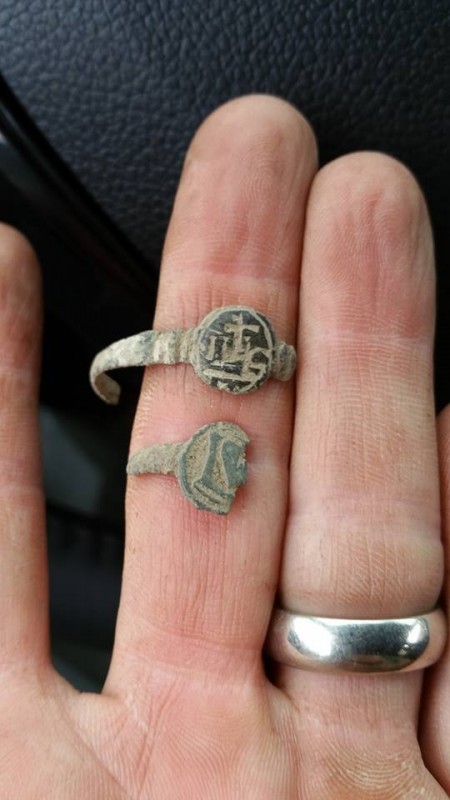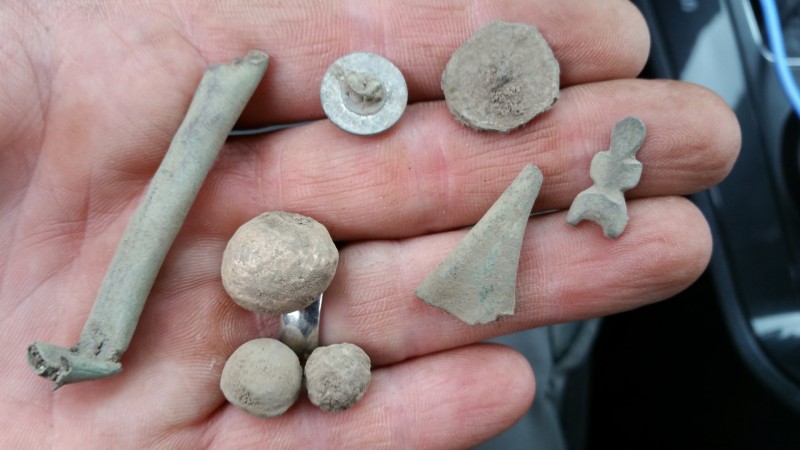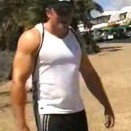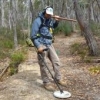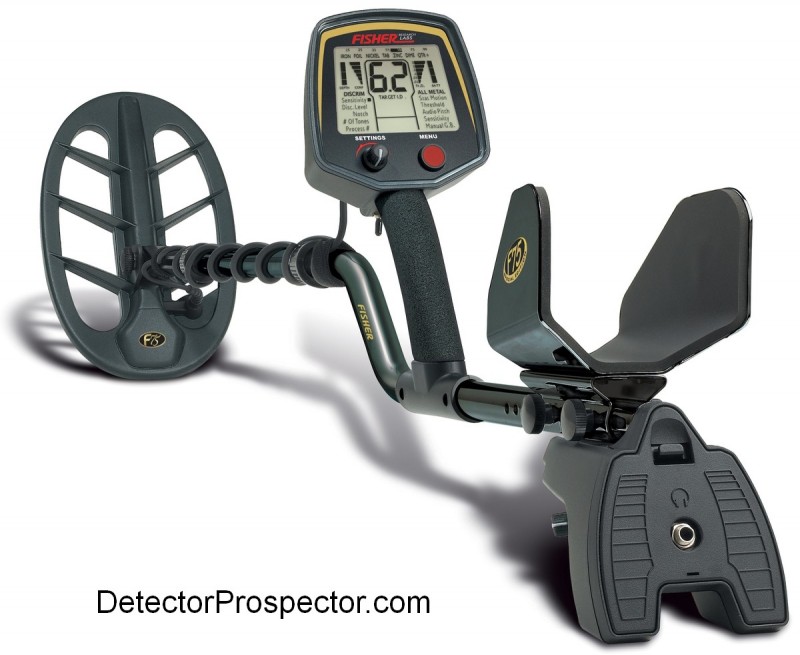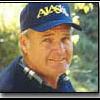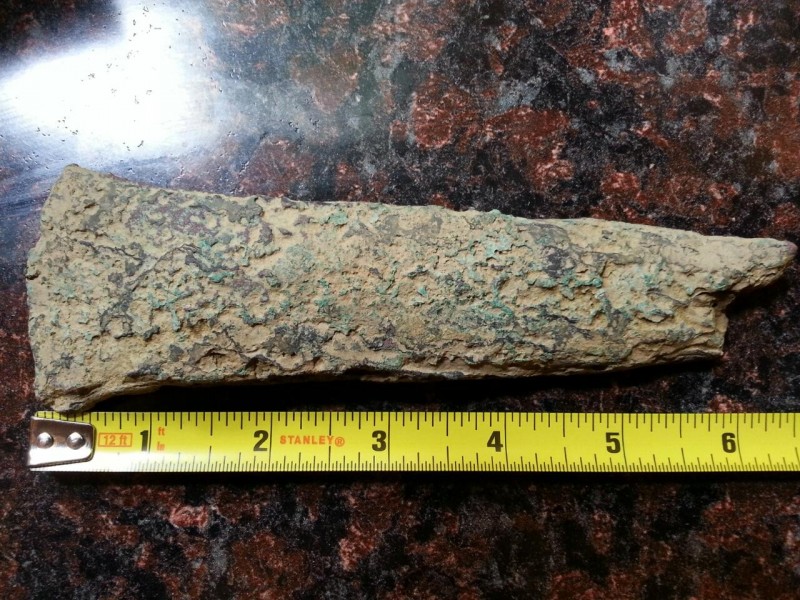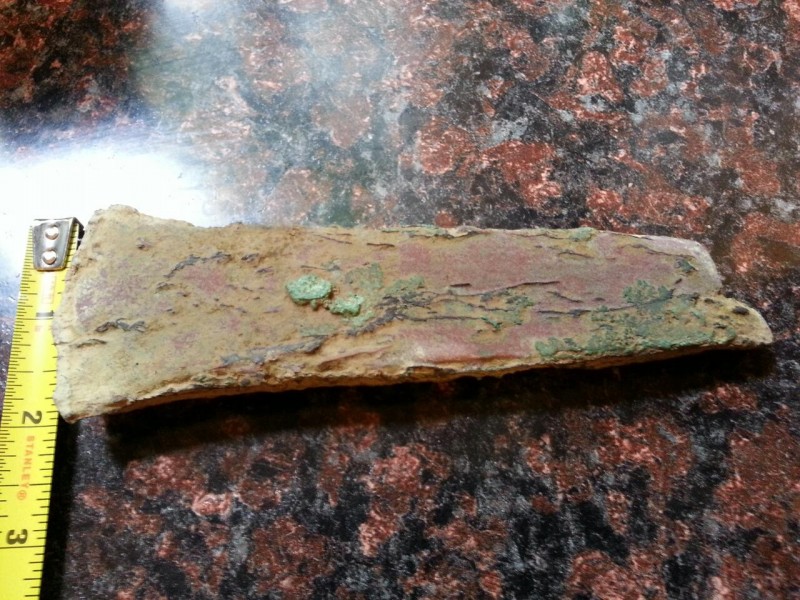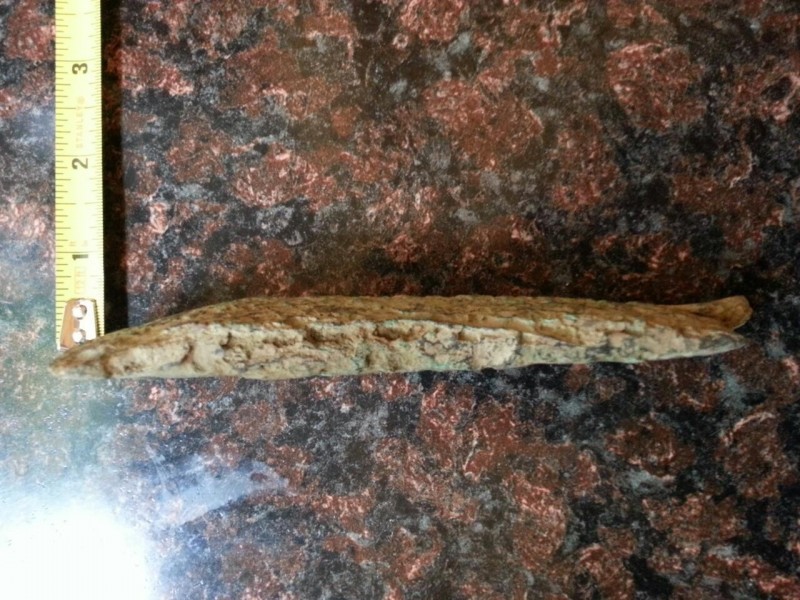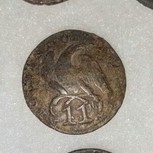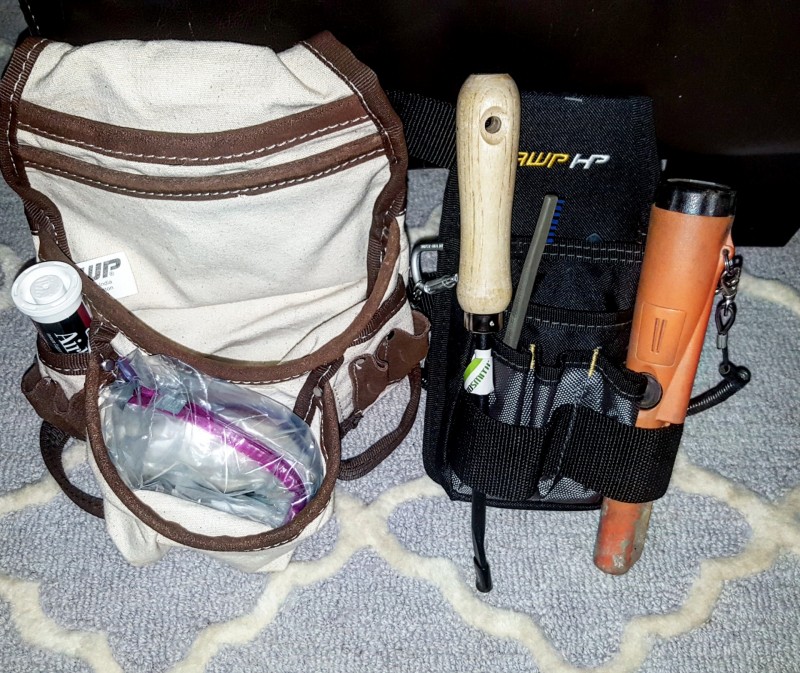Leaderboard
Popular Content
Showing content with the highest reputation on 09/29/2018 in all areas
-
Well we are winding this patch up... We still have a lot of dirt to dryblow, but the detecting is basically over. What a blast that was!!! So now I am reclaiming the ground with the backhoe. I didn't realize how much dirt we had pushed up until I started putting it back! We should finish dryblowing in a week or so Trent says. And another day or two to rehab the ground..... Then I will get all my gear prepared for a 6 month sleep and head over to Cairns via Virgin Air. Hope to meet up with the Goldhounds and Norvic ...if they are around.. ? , What a great trip this had been. Thanks to everyone here in Australia for making it a memorable event in my life.4 points
-
Hi I can only echo what Simon said about the Gold Monster 1000 and the Equinox 800. I have not yet seen or used the new White's 24K For just gold nugget detecting, especially smaller gold the Gold Monster 1000 is a fantastic detector. I started out my detecting life as a nugget hunter with a Tesoro Lobo ST. So actually having a display and the other features of the GM1000 are a great improvement. You will find gold with the GM1000. You will also find lots of other stuff large and small in the gold fields as the GM1000 makes you learn what various targets really sound like. Tin, lead, copper, aluminum and even big iron are going to go into the non-ferrous scale. The ferrous/nonferrous display readings and the discrimination on/off features help but are by no means accurate above 40% of the time. The detector operator needs to develop their skills to improve that percentage rate. As Simon said, one drawback is the lack of waterproofing of the control box housing which is quite substantial in size and awkward to cover. I can swing this detector all day and it has worked well for me in the Colorado mountains and the Arizona and California deserts. It is simple to use and can be "mastered" fairly quickly. The Equinox 800 can quite simply do it all if you are looking to detect targets at less than one foot deep. Any type of metal detecting you want to do can be done by this detector as far as I know except for detecting maybe semi-molten lava!!!! The 800 will also find gold nuggets in Park 2, Field 1 and 2 and of course the two Gold modes down to as small as .02 grams at least from my experience at two inches depth. Any larger gold will increase the probability and depth of detection. The small coil is in my opinion a must for nugget hunting. The features, flexibility and adjustability of the Equinox 800 can be overwhelming. Those who have recommended starting out in stock Park 1 and 5 tones or less for the first 40 or so hours are offering outstanding advice whether you are an accomplished detector user or just have a little experience with an entry level detector. If you are new to detecting this might not be the detector for you. (Sorry, I just noticed that you are not a newbie by your profile!) My only complaint with the Equinox 800 is that its hand grip is just too big (since the batteries are inside) with no padding and the detector is not balanced well. All the other complaints I had were corrected by the recent downloadable software update. It is fully waterproof, rugged and will challenge my detecting skills for many years to come. I did use both the Whites MX Sport and the MX7 for awhile which have the same ergonomics as the 24K. They were excellent detectors although a bit like the Equinox, they felt very nose heavy to me and gave me quite a bit of hand and arm fatigue in the beginning. Forgot to finish this, so if I was taking my son (relative newbie) to the gold fields say in Arizona I would hand him my Gold Monster 1000 and tell him to dig everything that makes a tone in disc mode and anything that goes into non-ferrous in deep mode even if just once. He is 21 and would have no problem digging 50 to 100 targets in 8 hours and maybe find a couple of nuggets. You could do the same thing with your GBP in all metal basically by reducing the iron tone volume and by setting up discrimination mode to reject iron and maybe the highest target range for hot rocks. It is not a hard detector to use if it will ground balance in your area without too much difficulty even though hot rocks can be a pain with the GBP. Then you could get the Equinox or 24K for yourself! Jeff3 points
-
What do you guys think about these? I made them initially because it’s what I need but... I’ve got a small batch of Carbon shafts for the Minelab Equinox that are perfect for shortening your detector right up for transport or water type detecting, for a fully collapsed detector you’ll have shave down or melt the small plastic locating pin on the handle clamp to let the inner shaft come in and get the last 100mm of retraction. They look superb, have no wobble or slop and are a lot lighter than the stock shaft (110g vs 186g) Even when fully collapsed and the aluminium clamp Is within the coils proximity it has no effect on detection depth, sensitivity or ID surprisingly. Taking PRE-ORDERS for a discounted price of AUD$75.00 ~USD$54.00 They are very limited so definitely be quick as most are already gone! http://www.detect-Ed.com All comments welcome ? Cheers! Ed2 points
-
I thought I would update as I make progress this weekend. The shaft is now cut to length @ 42 3/8", or 1076mm. This length is basically between the 1st and 2nd hole on the factory shaft. The length is based on my height and an all round compromise for land and water detecting. Based upon my research, getting a clean cut on the Kevlar was going to be difficult with any kind of toothed blade, so I went with a wet diamond saw. A tile saw specifically. After protecting the tube with painters tape, I wrapped a sheet of paper around the desired location and traced a line around the tube. The cut was then made free-hand. A "chop" style miter saw with a diamond blade, or some sort of guide on this saw would have made it easier then cutting along a line, but ultimately it was just two cuts which turned out OK. I lightly dressed the edges with some 400 grit, but this is basically how it came off of the saw, so it's a big relief having this part done. Next I will drill the hole for the pod. This part is slightly frustrating because despite living in a country that is supposed to use the metric system, all the local hardware stores only really carry imperial bits. I have a 3/8" drill bit here which is 9.525 mm, a bit bigger then the 9mm hole on the factory shaft. I was planning on dressing the hole and the top of the tube with epoxy anyway to keep any fibers from fraying, so maybe this will bring me back down closer to 9mm. Also the wall on my new tube is thicker and the stub on the plate is angled a bit, so maybe that will help to wedge it in there. I briefly thought about printing my own bottom piece for the pod with my own stub(s) at whatever size I wanted, but I would still have to deal with clearances and potential trial and error for fit, so I will go with the factory plate for now.2 points
-
Great answers! Minelab Gold Monster 1000 - Main likes are simplicity and the way the boosted audio bangs out on tiny gold. Main dislikes are squared handle, tendency to fall over, coil bump sensitivity at high sensitivity levels, and poor coil selection (two). Great grab and go unit. White’s Goldmaster 24K - Main like for me is feel on arm and hand grip, detector very stable on ground. Nice ergonomics for me (ergonomics is very subjective). Good coil selection (three coils plus another in the works) out the starting gate. The extra adjustability compared to the Gold Monster is nice but also adds complexity (not a problem for me, just an observation for others). Dislikes? For a new model the lack of built in wireless headphones is disappointing, 2 year warranty (most others are 3 - 5 years). Minelab Equinox - not in the same class as the units above. The GM1000 and GM24K are both pretty much dedicated nugget detectors. They have minimal use outside that realm. The Equinox on the other hand is the truest example of a detector that can do almost anything well that has been made so far. My main like - extreme versatility. This versatility adds complexity and again that is fine with me, but I note the fact for others. I like the wireless headphone operation built in. I like waterproof to ten feet. Dislikes? The handle on the Equinox is a little large for my hand, but again, fit is a personal issue. Only two coils so far, third one on the way. Which would serve best just depends on what you want from a detector.2 points
-
This idea for added boyancy in the rear was submitted to me. Looks like one idea. Under the kayak is also a space where a mount could be connected via PVC and built out into an optional stabilizer system, so I think a neater version of this could be created and mounted without drilling a single hole. Could also be removed when I'm not using the outboard.2 points
-
2 points
-
Hi Folks I had a great hunt at the beginning of September with the Equinox. At this site I discovered a nice handful of Native American Kettle Points, Jesuit missionary rings and a tinkler cone or two along with some later 1700's artifacts. One of the rings was an L Heart ring which was worn by the missionary, while the other ring was one that they gave to the Native Americans. Overall a great hunt that will be hard for me to top. I can't wait to get back and try for more. HH1 point
-
In the latter part of the Summer/early Autumn I found myself thinking more about a kayak for river hunting and magnet fishing. It was probably all those Aquachigger videos that did it. So I set my mind toward finding one before the leaves began to change much. I found a barely used Sundolphin Aruba 8 SS for $100. Next I began looking at sources of propulsion. I found a used Kota Minn 17ib thrust trolling motor for $35. I pulled a battery from a klunker for a trial power source and installed it hidden behind the seat. I cut a 7"x7" slit to slide the battery in on top of a thick foam seat pad. Then I found an old wheelchair to cut down and use as a kayak dolly to tow behind my mountain bike. Also, as a second source of propulsion I've rigged up a cordless drill trolling attachment, which works far better than I could've imagined. Everything else has worked on a rudimentary level so far, but some refinements are needed. The motor Kota Minn 17ib thrust does power the kayak sufficiently enough, but I find myself wishing I'd gone for a used 30ib thrust. And there are now wireless remote kits for trolling motors these days. Secondly, because I have a very light sit-in kayak the back end sags in the water more than I'd like, so I have to increase the boyancy back there and possibly even move the battery up to the very front of the boat. I'm intent on keeping the motor mounted in the back and out of my way when I use it. The Sundolphin Aruba 8 is the only sit in kayak I've seen that can mount a trolling motor (with a special kind of dual vice) in the back without cutting a bunch of holes and creating more fuss. I also need to settle on a way to steer the boat. For now I've extended the steering handle above my head and it works well enough, but is awkward. I've seen some guys use bicycle wire attached to pedal, some use remotes etc. I'm also considering the drill method as a more permanent power source with some electrical refinements. It is actually just as powerful as a trolling motor, if not more. A trip to Harbor Freight could net you a drill and several batteries for less than $60. Each battery powers the boat for 20 min or so at a speed of around 4-5 mph. A full sized trolling motor and battery will power the boat for around 2-3 hours on max speed of a few mph or so. More photos and and video will follow, but here's a couple pics from early on in the project1 point
-
Hi there folks, I have been prospecting for the better part of two years now (I’m 23) and have for the most part stuck to my grandparents property in California finding pickers and occasional small nuggets. I’m now living in Eugene going to school at the university and trying to find the time to get out and put my SDC to work. From what I have heard there is pretty great gold in Southern Oregon and I’m just putting the feelers out to see if anyone might have some useful advise or resources that could point me in the right direction. I’d also like to start making connections with folks in the community so feel free to let me know if you would like to let a young guy tag along or if you have a need for a big truck -Hayden1 point
-
It is nice to see a forum and it posts working like this one. Great Guys keep it up ?1 point
-
There are two levels of ground balance with Equinox. Multi-IQ just like other previous Minelab multifrequency options uses the multifrequency processing itself to remove most of the ground signal. For most normal ground you don’t need to ground balance. It was not until the CTX 3030 showed up that a ground balance was even added to the Minelab FBS units, and only then for use in extreme ground. Multi-IQ is the same. Most normal ground (parks) does not need the actual ground balance, and it is preset as locked in all modes except Gold Mode (see below) which is preset for tracking. Further, ground balance is a local setting and does not carry over between modes. That might explain why the hot rocks you encountered in Gold Mode were ignored in Park - different ground balance settings? Minelab Equinox Factory Presets1 point
-
I’m in Roseburg and will be going to Josephine county soon if any of you are interested in the discovering of some of the areas around there, message me!1 point
-
Minelab pulse induction detectors in particular are susceptible to directional swing issues but it is not something normally encountered with a VLF. There is a scientific basis for what you are experiencing however. Metal Detector Basics & Theory by Bruce Candy See pages 12 and 13 and in particular the section on atmospheric sources of interference.1 point
-
I think we all would love a lighter detector in the PI range. Don't think the technology would support a smaller package, but I am not knowledgeable about the size of the electronics needed to do what the 7000 does.1 point
-
The Equinox does not normally make a false signal from bumping the coil. The only time I have seen it is in Gold Mode with high sensitivity and low recovery speed. If you are using stock settings and getting constant false signals from bumping the coil something is wrong.1 point
-
I started a topic. Forgot to link to it, but I'm sure it you search "kayak" it will come right up.1 point
-
Nokta needs Minelab to do it first do they can copy them.? I'm not sure I understand what you mean by GPZ technology, but I suppose a lightweight PI/VLF combo would be neat.1 point
-
Second batch is already ordered with an ETA of mid-late October for those interested. More interesting things to come too! ?1 point
-
I think that for going outside the Equinox for all terrain hunting so many people are making a huge mistake overlooking the MX Sport. It's a shame that it had such a rough rollout. I think it's had a lasting prejudicial effect. If you're not going to go the way of the Equinox, and you can get past a bit of unecessary weight, I've seen no other machine consistently bring home the goods like the MX Sport. I was using it before the Nox, and went to the Nox not because I was dissatisfied with the Sport, but because the Nox offers more in a single package. If the Nox didn't exist, it would be no contest for me. I'd go back to the Sport. It is probably the most capable, yet overlooked single frequency machine on the market.1 point
-
GPZ? Are you referring to Minelab's PI (pulse induction) detectors? If so, I don't think so. Different technologies. When all is said and done, the Equinox is just another VLF induction balancing detector, the latest wrinkle on Minelab's multifrequency approach. What I would expect the Nox to lead to, whatever they call it, is the next generation in the premium EX/ET/CTX line--a machine that utilizes 5 discrete frequencies like the Nox (or maybe more) but also gives you the dual FE/CO numbers and other bells and whistles of the CTX. Minelab is probably working on it now. Now, if Minelab were Nokta, we'd probably already be reading about this machine and seeing preliminary reports :)1 point
-
Beach season is over - so I've made a little wrap-up video of the better finds. The video is in german, but perhaps it's interesting for someone anyway It's been a really great season!1 point
-
Thanks for the comments----as a matter of interest the 800 settings were - Beach 1 Sensitivity 21-- very quiet and stable at this level. Tones 5. Auto tracking. Audio 20. Big fan of factory basics--boffins at Minelab have done a good job. Upgraded to latest software. [ All figures supplied by my Dad. ]?1 point
-
The 14x9" is no slouch. In the testing I've done so far, if you can run a high gain on the 14x9" it will pretty well match what the 12x8" can do, especially if you can run Sens Extra. In hot ground it's a different ball game. Where you are forced to drop your Rx Gain, the 12x8" retains a lot of sensitivity, where the 14x9" starts to lose signal sharpness a lot earlier. Interesting thing though, on this 0.1g bit, Fine Gold was the best, provided I kept a slow steady swing. Sens Extra was next best, followed by Enhance which struggled a bit. I've seen this scenario several times in the past, which is why I still have the 5000, even though I have a soft spot for the old 4500. I also tried the 15" Evo just for kicks. Sens Extra was the only timing that got a sniff on it, but I had to up the Gain and back off the stabilizer. Fine Gold and Enhance nothing. In thick scrub, the 12x8" is nicer to use.1 point
-
1 point
-
Once upon a time all metal detectors went beep, and you dug up a metal object. Then a simple form of discrimination was developed based roughly on the conductivity scale. The main feature of this scale is that ferrous (iron or steel) items read lower on the scale than non-ferrous items. In a perfect world all ferrous readings could be set as a negative number, and all non-ferrous items set as a positive number. The reality is not so perfect however. Some steel items, especially items with a hole like a steel washer, will read up in the middle or high end of the scale, and show up right where only non-ferrous readings should appear. Thin sheet steel (bottle caps, flat section of rusted cans or roofing material) can show up in the mid range, and hardened steel items like bolts or ax heads can read way up in the silver range. These types of targets can trouble coin hunters in particular. Gold reads much lower on the discrimination scale normally due to a fairly low conductivity for gold. The gold range overlaps entirely with the lead and aluminum ranges, and these items are arranged on the scale based more on size than anything. Small gold, aluminum, and lead reads very low, and larger gold, aluminum, and lead tends to read in the low to middle portion of the scale. Those who chase these low end targets run into another problem with ferrous. Very small gold, lead, aluminum, and other small non-ferrous low conductors actually overlap with small ferrous items and so the clean ferrous to non-ferrous "breakpoint" does not actually exist,. The breakpoint is more of a "breakzone" i.e. a fuzzy zone where items overlap. The ground itself contains ferrous materials in the form of iron minerals. Ground minerals can act to confuse the detector further, enhancing the chance that a small non-ferrous reading will be interpreted as ferrous. Another way to say that is that in highly mineralized ground the overlap between ferrous and non-ferrous targets gets larger. The ground mineralization is critical to how this all works and so air testing is not recommended for testing the ferrous/non-ferrous overlap region on any particular detector. Note that this does not apply just to very small items. The deeper an item is, the smaller it appears to a detector. In other words a deep large item can sound just like a shallow small item. When you bury items of any size in highly iron mineralized ground, the deeper they are, the more chance the ground mineral signal will overlap and cause the item to read as ferrous right at the edge of detection range. Fisher F75 metal detector The early model discrimination detectors usually had a knob that adjusted all the discrimination. Everything below the knob setting was ignored, and everything above the setting accepted. The discrimination pioneers rapidly discovered that the dividing line between ferrous and non-ferrous is "fuzzy". The knobs could be set to reject nearly all ferrous readings, but then some good non-ferrous targets would get missed. The solution was to use a little bit lower discrimination setting, which meant more ferrous trash was dug, but more non-ferrous items were revealed. Managing the ferrous to non-ferrous breakpoint is critical. There is no setting that rejects all ferrous while detecting all non-ferrous, and the more mineralized the ground is, the less reliable the settings become. As a rule of thumb, the more aggressive the iron rejection, the more chance of non-ferrous items being misidentified. Detector technology advanced, and tone schemes were developed that divide the discrimination scale up into segments or "bins" where all numbers within a specific range make a specific tone. These tone schemes are often preset at the factory. The ranges can be arbitrary and arranged in many ways, but all share one common factor. Where is the setting that divides low ferrous tones from the higher non-ferrous tones? This is the "ferrous breakpoint". Everything below this point will give a "ferrous tone" and everything higher a "non-ferrous tone". The detector engineers are well aware of the overlap between ferrous and non-ferrous items. In choosing one setting to define what is in reality a zone the engineers have to make a hard choice. If the setting is too low, the operator will get many non-ferrous readings that turn out to be ferrous. That really irritates people. Or they can set the breakpoint higher. That way less ferrous gets dug. Some good non-ferrous items will also be missed, but only in the rarest cases does anyone ever know what they are missing. The odds are there will be more complaints if the ferrous breakpoint is too low than too high. The goal is not to find every non-ferrous item, but to keep from digging too much trash identified as good. This diagram is shows the common discrimination range employed in nearly all metal detectors. This particular model (Garrett) sets 40 as the point where ferrous items separate from non-ferrous items. Yet the chart reveals the overlap zone runs from about 35 to 45, a solid ten point spread. Small gold can identify as ferrous, especially in iron mineralized ground. Many detectors identify this zone on the meter via overlapping diagonal lines. The ferrous/non-ferrous overlap region What this means is that any detector that employs a preset tone scheme with no ability to adjust the "ferrous tone breakpoint" is assured to be missing at least some items due to an overly aggressive setting dialed in at the factory. This was eventually recognized, and now quite a few detectors allow the point where ferrous tones flip to non-ferrous tones to be adjusted. Some models are now even allowing for multiple volume controls for each separate tone, are at least the ferrous tone. This is most often called a "ferrous volume" setting. The Fisher F75 is an earlier tone based model and as such the tone schemes are preset at the factory. You can choose between the schemes, but the tone settings of where the tones occur cannot be adjusted. The F75 employs a target id scale that ranges from 1 to 99 with the 0 - 15 range defined as ferrous. From the F75 Users Manual page 20: 1. 1-7 iron 2. 8-15 iron 3. 16-20 foil 4. 21-25 foil 5. 26-30 nickel 6. 31-35 nickel 7. 36-45 tab 8. 46-55 tab 9. 56-60 zinc 10. 61-65 zinc and from page 25: F75 OBJECT AND TARGET I.D. Most iron objects 4-12 foil from gum wrapper 16-25 U.S. nickel (5¢ coin) typically 30 aluminum pull-tab 33-55 aluminum screw cap 60 - 70 zinc penny (dated after 1982) typically 60 aluminum soda pop can most often 63-69, but can vary widely copper penny, clad dime typically 70 U.S. quarter (25¢ coin), clad typically 80 50¢ coin, modern clad typically 86 old silver dollar coin typically 90 US silver Eagle $1 coin typically 91 The implication is that non-ferrous items will only read 16 and above. Any readings of 15 and lower are deemed ferrous. The F75 has several preset tone schemes, the basics being monotone, two tone, three tone, four tone, and Delta Pitch (separate tone for each target id number i.e. multitone). The quirk is simple. The two, three, and four tone schemes all have a non-adjustable factory preset low tone for ferrous at 15 and below. The tone schemes override any other discriminations settings. In other words, if you have manually set the discrimination for ferrous to be a lower setting, switching to any two, three, or four tone scheme will automatically change the low tone setting to be at 15 and lower. The problem is that with time it was revealed that the F75 will detect some non-ferrous items at much lower settings than 16. Tom Dankowski finally put it all together and determined that a reading of 7 or higher would reveal additional non-ferrous items that are rejected when the setting is at 15. Tom's recommendation for the F75 while hunting ferrous is therefore to not use the tones, but to use the monotone setting and adjust the discrimination manually to 6. That way items 7 and higher signal as a non-ferrous target instead of delivering a low ferrous tone via the tone schemes. Again, going to a tone setting will automatically override a manual discrimination setting if one has been set. Tom wrote this all up as a great article in the 2009 Fisher Labs World Treasure News on page 11. I actually had the chance to see this in person in my own use of the F75. Early on I trusted the tone settings and two tone is quite handy for those simply wanting to dig all non-ferrous. Yet on my trip to England with the F75 I encountered a mystery. A gold coin was found and another F75 newbie was telling me about how he tested it with his F75 and it gave a nice ferrous tone. He was quite upset and worried his detector was defective. He did not have the coin however and so I could not see what he was describing and at the time I have to admit I was clueless. I know now that he was using tones, and that the gold coin was reading lower than 16 and so being identified as ferrous! My early use of the F75 was more for gold nuggets, and I usually used all metal mode. Yet my favorite feature on the F75 was full time target id while in all metal mode. My method was to acquire all targets, then dig any that flickered even once above my mental ferrous breakpoint. Unfortunately I leaned too much on the user manual initially and tended to pass on targets reading under 16. My early writing on the subject reflected that. After I discovered on my own that gold was reading lower I started adjusting my mental settings lower. Then I bumped into Tom's writing on the subject and it all came together. The bottom line in that non-ferrous items can read as low as 7 on the F75 yet the ferrous tone break is set at 15. This is just fine for most Park coin detecting, but problematic for those hunting low conductors of any sort or coins in dense ferrous. Either use monotone and decide where you want the setting to be (6 as Tom recommends or maybe somewhere in between 6 and 15 if 6 has you digging too much trash) or hunt in all metal and use the target id numbers to decide when to dig keeping in mind non-ferrous can read lower than 16, especially in high mineral ground. This is not a flaw in the F75 but just a function of any detector using a preset tone scheme. There are many detectors like this on the market. They tend to be less expensive models, or older models, as most new detectors now feature an adjustable tone break for the ferrous/non-ferrous overlap zone. Another take on the subject. And down the rabbit hole - Tune Out Nails - You Will Miss Gold! Fisher F75 Information Page1 point
-
Ridge Runner, I am old enough to also remember Sgt. Preston on the radio. I was very young and remember waiting very impatiently for the next episode. Back in those days, before television, the radio was the high point of the day for family entertainment. Right after supper everyone gathered around the radio to listen, imaginations could run wild and the stories could very easily be visualized.1 point
-
No, New York... But, you may find this interesting..... yes, my host is very kind to share his sites with me. A while back near where I live I found a 3500 to 6000 year old copper adze that my state archaeologists believed may have originated in the Great Lakes Region since there are natural copper deposits in that area... Truly one of my best finds ever.. They are tough to discover here in New York... I will include the email he sent me back. He is the Curator of Archaeology at our state museum.. "Thanks for your email. Judging from your photographs, yes, this doesappear to be a copper adz (and a very handsome one at that) – this issuggested by the expanding shape in plan view, the asymmetric side viewprofile, and the concave surface on one face.Such copper adzes and gouges are relatively common in much of the GreatLakes, especially Wisconsin, where they date roughly to between 4000 and1500 BC (6000 and 3500 years ago). There, they are viewed as onediagnostic of the so-called "Old Copper Culture," a Native Americanlifeway that included the mining of copper that occurs naturally inparts of the Great Lakes, in the manufacture of these tools.In the New York region, these copper artifacts are less common but arediscovered occasionally. Parallel-sided gouges have been found inassociation with Brewerton notched points, dating to circa 3000-1500 BC. Copper adzes similar in form to yours have been found in the Champlainbasin – their age is uncertain but may be from roughly the sametimeframe. Because there are natural sources of copper in parts of theGreat Lakes, but not New York, archaeologists believe these artifactsprobably came into the region by some form of trade or exchange fromother Great Lakes groups. This interpretation is generally supported bychemical sourcing methods that compare geologic sources of this materialwith artifacts made of copper."1 point
-
Yes, you are the God of Rye Patch! What a great haul for such a short time....I spent a week there early this summer, and didn’t even find half that much! Great job Rick!1 point
-
There was a post recently about listening and understanding detectors. Well, that Da Yammie post above...I tried listening...I can hear it...but for the life of me I can barely understand it ? Some sort of French/Canadian/Scottish/Irish/Polish mix?? ?1 point
-
For the longest time since I purchased my first metal detector in 1997 I've been either using my pockets or those cheap pouches that come when you buy a new metal detector. Today I bought a couple $10 pouches and used my wading belt for fly fishing. A tool belt will probably work just as good but I have my tool belt full of all the stuff that I need and I didn't feel like emptying them out ? I also bought a dandelion tool to help me dig around some of those deep targets and not ruin them. I also put a folding saw on order with a 7-inch blade because sometimes you run into a root. It is tough when you know it's a really good find and can't get to it or worse yet, put a gash in an 1875 IH that was in mint shape. Believe it or not I've had to walk away not having the proper tools and not made it back. I also put some extra dry paper towels in a plastic bag and paper towels soaked with vegetable oil in another bag the preserve relics. I have an old retainer case for good finds and also a couple Airborne containers for coins. You can separate the coins with bits of paper towel if you want. It would be cool to see what other people use for their detecting tools. I think I'm only missing a spray bottle of distilled water. Feel free to post pics or share what works for you.1 point
-
That's a great looking gear setup! Fantastic idea bringing along some veg oil and relic preservation. I keep a pretty basic setup going because I just hate to walk around with 10lbs of gear weighing me down while I'm swinging the coil. For a belt, I went with my old 5.11 tactical 1.5' trainer belt due to it's thickness and usability. I found this nifty brown leather sheath that was built for a digging tool and pinpointer off of Amazon ( here ) and ( this ) pouch for smaller relics and non-silver coins. Both of those items work well and keep the frequently used items at reach. I also bought a small tactical MOLLE pouch ( this one ) for keeping a few things handy (extra batteries, insect repellent, note pad, place for phone and small flashlight) Last piece of current gear used in an old Maxpedition RollyPoly Folding Dump Pouch ( here ) for all the garbage that I find. I always haul everything that I find out and this pouch does a good job holding all the crud. It's also nice in that it folds up and stays out of the way if it's not needed at the time. Great idea sharing out carry gear ideas! -Bill1 point
-
1 point
-
There is detectable gold up the Calapooia, Quartzville Creek, and then lots down in the Grants Pass area. But there is a lot of private/claimed land and the residents of Jefferson can be strong enforcers of claim boundaries. Best bet is to do research and scouting before detecting as online info can be inaccurate sometimes, at least in my experience.1 point
-
I really like the 24k. Don't miss my GMT since getting it. I have found it to be really sensitive and able to find some really small gold. Still learning it, but I think it's going to be great, at least for me.1 point
-
Chuck, Please excuse my delay in responding to your post. This getting old crap is sure making life miserable at times. I've been living with pain and impaired mobility off-and-on since an on-the-job injury in Sept. of '87 when I worked at Compass, but full-time misery since late '90. Then an injury March 2nd of this year left me with a mild tear to my left rotator cuff, and a complex fall on my cement driveway the first of April caused a severe tear to my right rotator cuff and other issues in my shoulder and neck. The resulting issues have really limited my opportunities to get out detecting this past four months, but when I do the bulk of my swing-time is spent with a White's model in-hand. Oh, I still manage to get some time in with my also excellent working Nokta CoRe and Relic devices, but lighter weight and comfortable balance are what I crave the most so far this year. I ended 2017 using a terrific, multi-purpose MX-7 as the only White's in my current Regular-Use Detector Team, but I now enjoy owning and using several models of that brand that have all proven themselves to me in the past. I started out the year by adding a 'Noah hand-me-down' XLT to my 'detector team' and equipped myself with my preferred 6½" Concentric coil for it. In May I made a trade of a brand new extra MX-7 for a choice-condition modified Classic ID with the 5½" Ferret Concentric coil. I swapped a back-up Nokta FORS Relic for an MX Sport in June or July, and then on the 28th of last month I bought an MX-5 'package' that included the 6½" Concentric coil. I live in the high plateau desert region of far Eastern Oregon so I'm not close to any sandy coastal beaches, and my hampered mobility and use of a cane full-time make it difficult to beach hunt in soft, loose sand the past quarter century. Besides, I can't swim and never did more than wade out only to very shallow depths when I did. I like the MX Sport, but I plan to sell it with a brand new set of waterproof headphones and an extra search coil simply because I don't need it because my MX-7 uses the same circuitry and serves all my needs. The MX-7 and modified Classic ID with the smaller coil are my two most comfortable TID equipped detectors to handle, and all of my 'team' spend the bulk of their time Relic Hunting and perhaps 10% to 20% of the time are used for typical Coin Hunting applications. There's no such thing as a 'perfect' detector which is why I also have current models from Fisher, Makro, Nokta and Tesoro, along with some older favorites I occasionally use but mainly have for seminars and training sessions. Those include Compass TR's, a Garrett Hunter BFO and TR-Disc. units, and an early Teknetics Mark I Ltd. Naturally, every detector that makes the cut to be on my Regular-Use Team has to have functional features and in-the-field performance, but I can't ignore the 'fun factor', either. 'All' models that stay in my arsenal are 'fun' to use, and I do get a lot of 'fun' and enjoyment out of using my MX-7. Like you, I am not certain why so many have been caught up in the XP and Minelab offerings this past three or four years, and it seems like many USA based manufacturers have been ignored over that period of time. I know that I hear from some people who think the MX Sport / MX-7 are repackaged clones from the MXT / MXT Pro, but they are based on new circuitry and do have different features and some differences in performance as well. Perhaps some of the terrible promotional videos at release time for the MX Sport didn't help, nor the fact that it was rushed-to-market before pre-production field use and evaluation which left early releases with a lot of glitches. Well, they got those worked out and went on to make a great land-use version of the Sport with the MX-7. I do wish more White's consumers would step up and contribute their views as there have to be more than the two of us using these really versatile models. Monte1 point
-
I’ve express this before in that all new detectors should come with two coils. It’s a pain in the backside to buy something and have the wants are the need of another coil. We all like to save money and buying a two coil package deal upfront is cheaper than purchasing one at a later date. Gerry On what you said it sounds as if you got one of the new 24 K’s in your hot little hands!?? Chuck1 point





